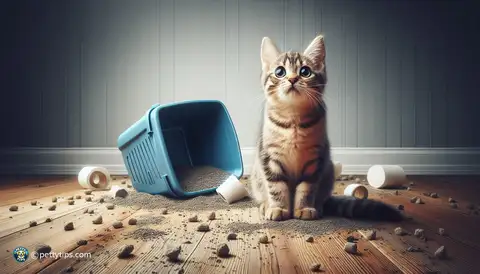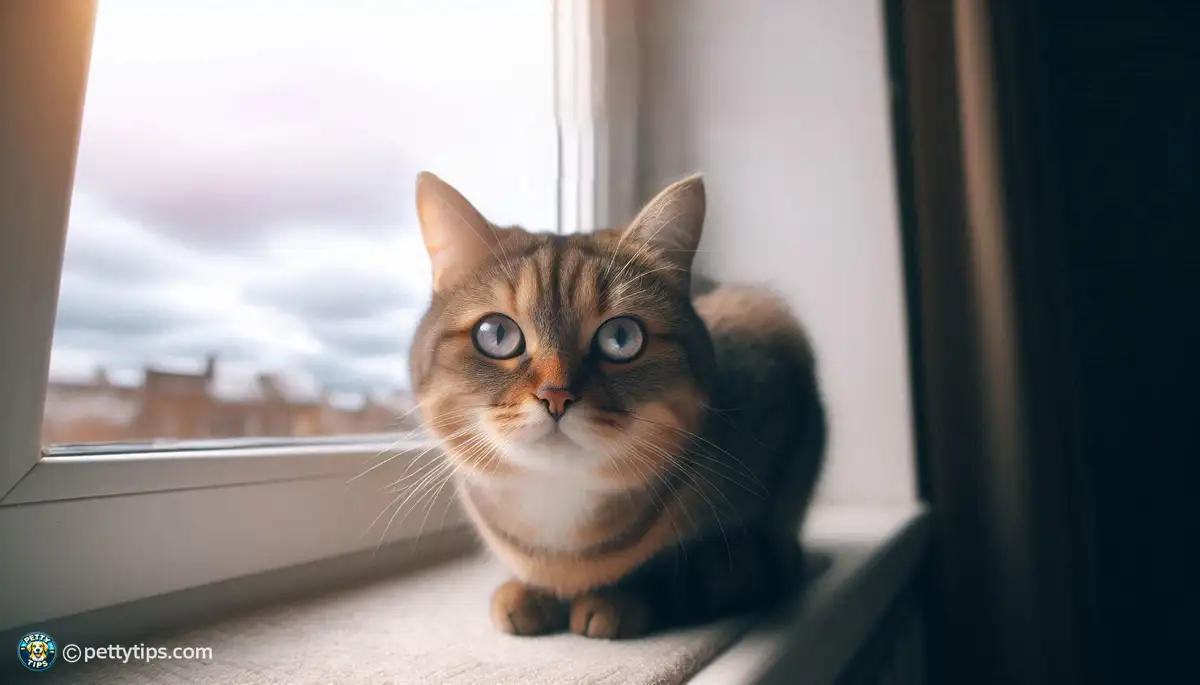
Exploring the Link Between Anxiety and Litter Box Problems in Cats
Penelope Roberts - Aug 27, 2024 - 6 min read


Understanding your cat’s behavior is essential for providing the right kind of attention they need. Cats communicate differently from humans, often relying on subtle cues and body language to convey their emotions. Recognizing these signs can help you respond appropriately to your cat's needs.
When your cat is craving attention, they may exhibit various behaviors that signal their desire for interaction. These behaviors can range from vocalizations and physical contact to more subtle cues like changes in body language or habits.
Responding promptly to your cat's signals is crucial for maintaining a strong bond and ensuring their emotional well-being. Ignoring their attempts to seek attention can lead to feelings of neglect or insecurity, potentially resulting in behavioral issues or stress-related health problems. By understanding and responding to your cat's needs, you can strengthen your relationship and create a happy, fulfilling environment for both of you.
One common sign that your cat is craving attention is excessive vocalization. Cats may meow more frequently or loudly than usual to get your attention. This could be a plaintive meow when you're not giving them enough cuddles or a persistent yowl when they feel lonely or bored.
Another telltale sign of attention-seeking behavior is clinginess. Your cat may follow you around the house, constantly seeking physical contact or rubbing against your legs. They may even try to sit on your lap or nuzzle into your arms whenever you're available.
When cats feel neglected or bored, they may resort to destructive behavior as a way to seek attention. This could manifest as scratching furniture, knocking over objects, or even urinating outside the litter box. These actions are often a cry for attention and stimulation.
On the opposite end of the spectrum, some cats may become withdrawn or aloof when they crave attention but don't receive it. They may spend more time hiding or avoiding interaction with their owners, preferring solitude over seeking attention in vain.
While purring is often associated with contentment, cats may also purr as a means of seeking attention. They may purr more loudly or persistently when they want affection or reassurance from their owners.
When a cat rubs against you, they're not only marking you with their scent but also seeking attention and affection. This behavior is a clear indication that they want to interact with you and be close to you.
One of the best ways to respond to your cat's craving for attention is by spending quality time together. Set aside dedicated playtime or cuddle sessions each day to bond with your cat and meet their need for interaction.
Providing an enriched environment can help alleviate your cat's boredom and prevent attention-seeking behaviors. Offer plenty of toys, scratching posts, and interactive games to keep them mentally and physically stimulated throughout the day.
Cats thrive on routine, so establishing a consistent schedule for feeding, playtime, and cuddling can help fulfill their need for attention and predictability. Stick to a regular routine to provide stability and structure in your cat's life.
When your cat displays desirable behaviors or seeks attention in appropriate ways, be sure to offer plenty of praise and rewards. positive reinforcement can encourage repeat behaviors and strengthen the bond between you and your cat.
If your cat's attention-seeking behaviors persist or escalate despite your efforts to address them, consider seeking guidance from a professional animal behaviorist. They can assess your cat's behavior and provide personalized recommendations for managing and modifying it effectively.
In some cases, attention-seeking behaviors may be a sign of underlying health issues or discomfort. If you're concerned about your cat's behavior, consult with your veterinarian to rule out any medical problems and ensure they receive appropriate care and treatment.
Understanding your cat's behavior and responding to their needs is essential for fostering a strong bond and providing a fulfilling life for your feline friend. By recognizing the signs of attention-seeking behavior and taking proactive steps to address them, you can create a happy and harmonious relationship with your cat. Remember to be patient, consistent, and attentive to your cat's cues, and you'll both enjoy many years of love and companionship together.